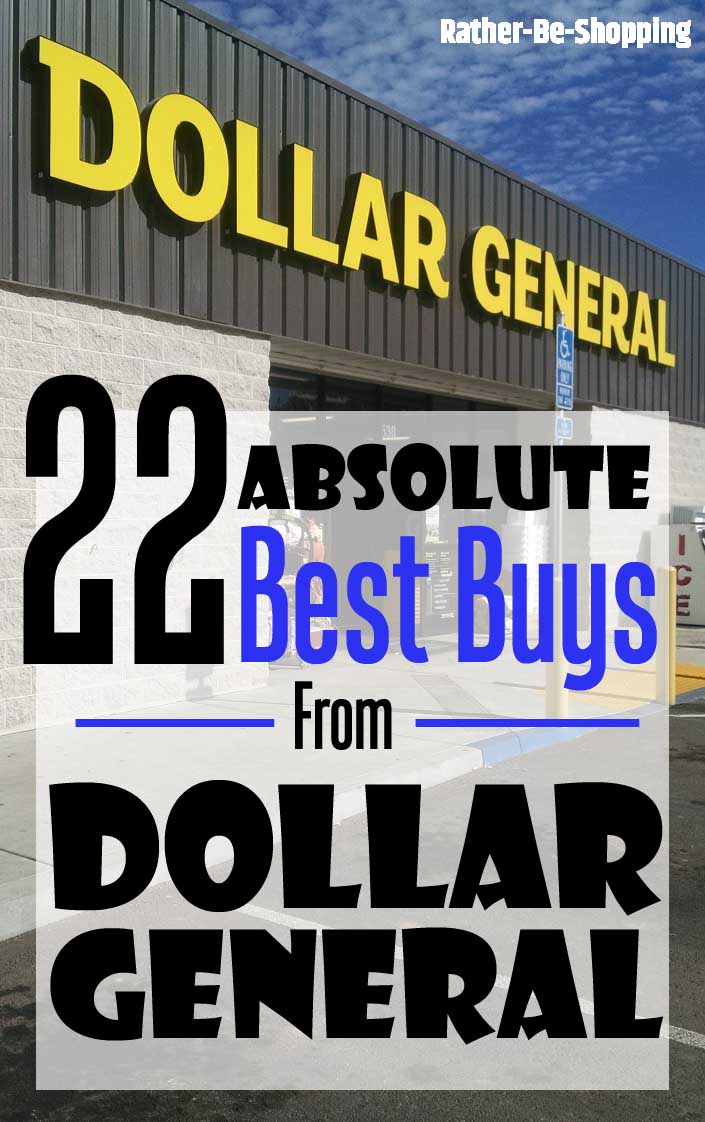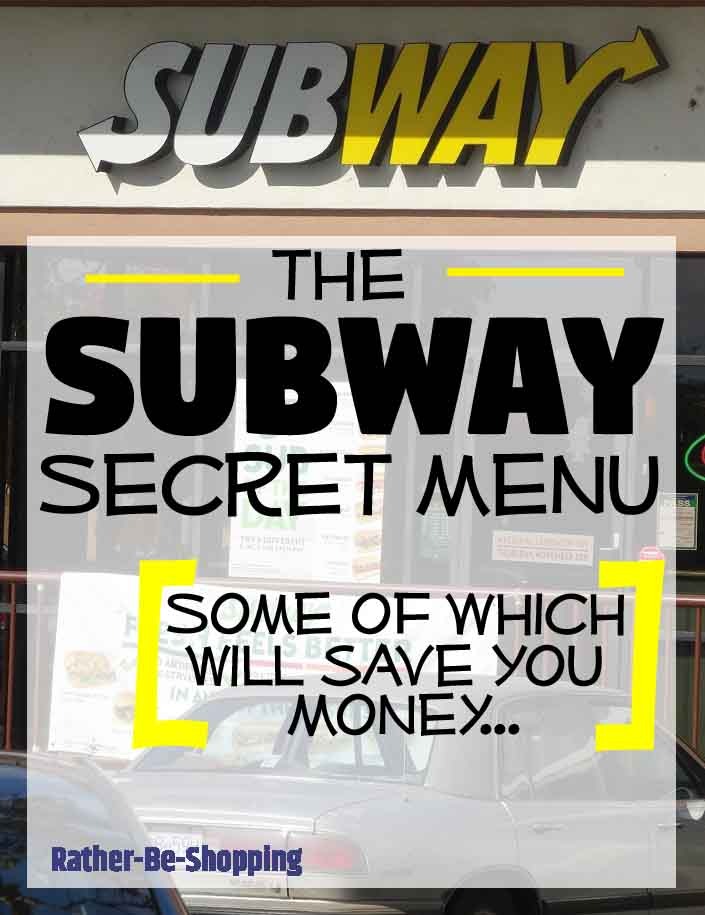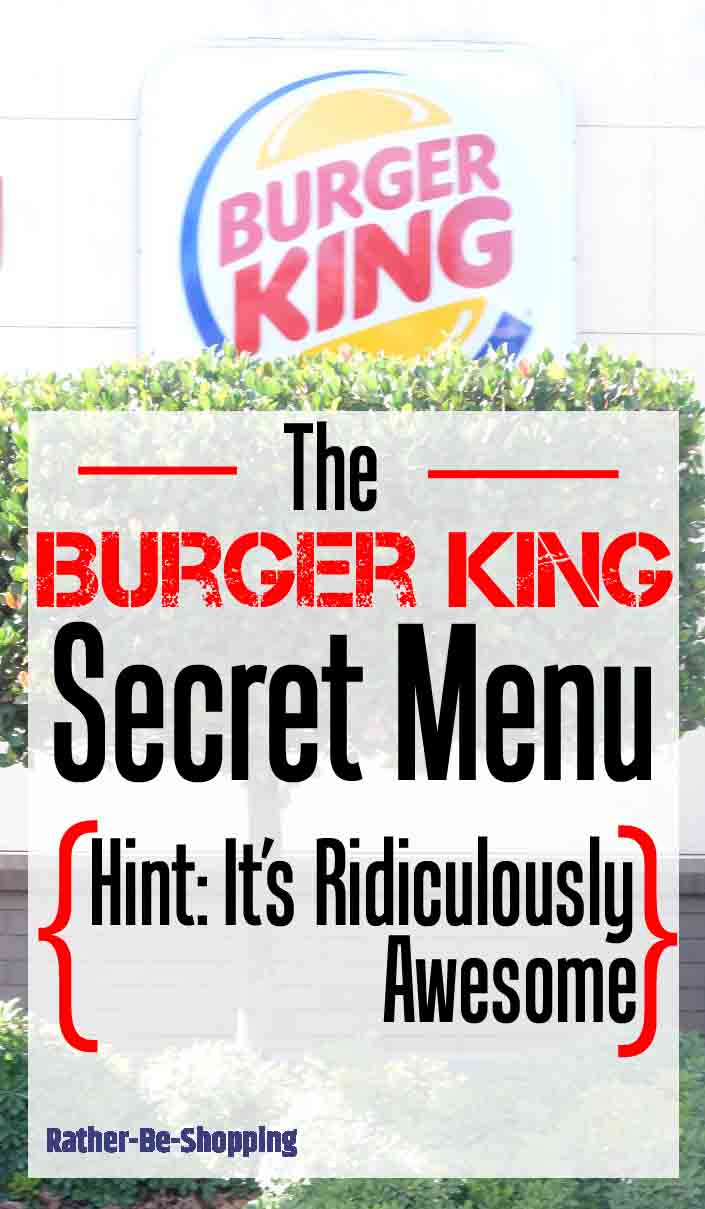The Absolute Best Buys at Dollar General (Some Will Surprise You)
Dollar General is a little different than most retailers. Because they have the word “dollar” in their name they often get confused as a dollar store, which they clearly aren’t. Think of Dollar General as a cross between a dollar store and a discount department store. To help you save the most money on your next trip, I’ve put together the top 22 products to buy at your local Dollar General, some of which will shock you with their low price.

Toys
If you need a few toys as stocking stuffers, party favors, or cool little gift ideas, the Dollar General is a great stop.
Not only do they always have a wide selection of toys with a $1 price tag, but they also have many quality toys priced under $4 that are terrific bargains.
TOY DEAL EXAMPLES
I did the research and found some excellent examples of toy deals at DG:
Bugs Matter Web Slime – Dollar General: Priced at $3.50. Walmart: A similar product, Nickelodeon Slime, is available for $5.00. Amazon: Priced between $6.99 – $12.99.
Disney Licensed Hair Chalk Kit – Dollar General: Offered at $5.00. Walmart: A similar Disney Princess Hair Chalk Set is priced at $9.99. Amazon: $10.99 to $15.99.
Dino Valley Playset – Dollar General: Available for $5.00. Walmart: A similar Dinosaur Adventure Playset is listed at $7.88. Amazon: Comparable dinosaur playsets range from $8.99 to $14.99.
Wild Quest Ocean Animal Figures – Dollar General: Priced at $5.00. Walmart: A similar Ocean Animal Figure Set is available for $6.97. Amazon: Range from $7.99 to $13.99.
DVD Movies
Dollar General has a very good selection of DVD/Blu-ray movies starting at $5 each. Look for both kid and family titles as well as drama and action flicks for the rest of us.
Surprisingly they have a bunch of rare DVD movies that you’ve actually heard of, many of which you’ll have to pay $7-$12 for at Walmart if you can find them at all.
PRO TIP: LOOK FOR 1 PENNY MOVIES
Dollar General occasionally pennies out old stock, including DVDs.
These items are meant to be removed from shelves, but some stores forget or leave them in clearance bins. If you scan a DVD at the register and it rings up $0.01, congratulations—you just scored it for a penny.
Specifically, look for older movie titles that seem like they’ve been there forever and use the Dollar General App to scan barcodes to see if they ring up $0.01.
See Also: Here are the 14 Cheapest Grocery Stores Near You
Greeting Cards
Why would you ever pay $6 for a Hallmark card again if you have a Dollar General in your town?
They have an excellent selection of high-quality greeting cards for $1 each. Convey your sentiments without overspending and keep your wallet happy…am I right?
Party Supplies
The next time you’re planning a birthday party, you’d be crazy to not stop by Dollar General first.
Buy all your party staples like napkins, plates, cups, and party decorations for a buck each then use the money you saved to buy a gift.
Seriously, you can save a lot of money by buying party supplies at Dollar General and staying out of the big-box stores.
Air Fresheners
My truck use to flat-out stink inside. With three kids playing sports and doing dance classes, I can usually find a dirty sock or two in the backseat, or nasty French fries between the seats stinking up the joint.
I always stock-up on air fresheners at Dollar General and pay 20-30% less than Walmart and Target.
My truck has never smelled better, until the air fresheners wears off anyways…
See Also: How to Essentially Get a $60 Costco Membership for Free
Wrapping Paper
Aside from stocking up on wrapping paper on December 26th, the single best way to save money is by shopping at Dollar General.
They carry quality paper for just $1 a roll, and the rolls are pretty darn big too.
PRO TIP: SHOP AFTER HOLIDAYS
Christmas, Valentine’s, and Birthday wrapping paper often gets marked down 50-90% off right after major holidays.
Example: A LARGE $5 holiday wrapping paper roll can drop to $0.50 or even $0.25 in clearance bins.
Instead of buying paper with “Merry Christmas” printed on it, choose solid colors, stripes, or polka dots that work for multiple occasions (birthdays, weddings, etc.).
Hand Tools
The tools at Dollar General are much better quality than the cheap stuff you’ll find at the Dollar Store.
They have a slew of quality wrenches, pliers, and screwdrivers for $2 each and even bigger hand tools like saws, hammers, and drill bit sets for $5 or under.
Coloring Books
If you have any rug rats running around the house who love to color, be sure to stock-up on coloring books from Dollar General.
At a $1-$3 each, you can’t beat the price and the big selection of high-quality coloring books.
PRO TIP: LOOK FOR JUMBO & LICENSED CHARACTER BOOKS
Dollar General carries Jumbo Coloring & Activity Books featuring popular characters like Disney, Marvel, PAW Patrol, and Hello Kitty for $1-$3.
These are often cheaper than Walmart or Amazon, where similar books start at $4.99+.
Also, many DG stores have a $1 section that includes smaller coloring books perfect for travel or party favors. Look near the school supplies, seasonal aisle, or near the checkout.
Dryer Sheets
Buy your dryer sheets from Dollar General and pay less than Walmart, Target, and Rite Aid. Look for them in the clearance section too to save even more money.
See Also: Dollar General Return Policy: Time to Muddle Through the Confusion
Curtains
Were you even aware that Dollar General sold curtains? If you’re like most, probably not.
But they surely do, and they’re a screaming deal.
You can get 40″ x 80″ curtain panels for $8.50, and 5-piece sets for less than $15. The brands are high-quality and include Comfort Bay and TrueLiving.
Lampshades
Until recently, the last place I would look for a new lampshade was at Dollar General.
Boy, was I wrong. In actuality, you can get a quality TrueLiving lampshade for a sweet and easy $5. No-brainer.
Wall Art
If you’re looking to spruce up the walls of your home, consider staying out of expensive art galleries and print shops, and shop at Dollar General instead.
For under $20, and often for under $10 you can score some very nice framed prints and wall art.
PRO TIP: CHECK CLEARANCE FOR HIDDEN ART GEMS
Some wall art at DG may be on “hidden clearance” (lower price than listed). I always use the DG app to scan the barcode and check the real price before checking out.
Also, I’ve noticed that art is often marked down during seasonal resets—especially after major holidays (Christmas, Easter, Fall). Look for yellow or orange clearance stickers for savings up to 50-70% off.
Also, canvas prints tend to be higher quality than framed paper prints and be sure to look for wood-framed pieces for a more sturdy, high-end look.
Paper Supplies
When you’re low on envelopes, stationery, computer paper, plain notebook paper, and even construction paper, head to your nearest Dollar General.
As a general rule, you’ll pay about a 1/3 less on paper products when compared to office supply stores.
Cheaper than Walmart too in most cases.
Spray Paint
Have you ever noticed that the “in-house brand” spray paint at Home Depot and Lowe’s sells for about $4 a can?
Opt instead to stock-up at Dollar General for $2 a can. The quality and coverage of their Miracal brand spray paint is excellent.
And at $2 or less per can, the price is hard to beat.
See Also: Save Money at Dollar Tree – 20 Hacks to Make It Happen
Dried Fruit and Nuts
Nuts like cashews, almonds, and roasted peanuts can be quite expensive at grocery stores.
The same can be said for dried fruit. But not at Dollar General as it’s a great place to fill-up the pantry on the cheap.
To give you some perspective, you can typically buy nuts and dried fruits for 50% less than traditional grocery stores.
Picture Frames
If you’ve shopped recently at Michaels, you know just how expensive picture frames are these days.
So consider buying your picture frames from Dollar General and save a nice chunk of change.
For example, at Dollar General you can get a TrueLiving 8 x 10″ picture frame for an affordable $3.
Essentially the same frame at Michaels will run you $8, regularly $14.
K-Cups for Keurig
For $5 you can get a 12-pack of Keurig K-Cups, which comes out to $0.42 a serving.
At Costco you’ll pay about $0.62 each and have to buy a box of 160 K-Cups to get that price.
The K-Cups at Dollar General aren’t generics either. They carry brands like Dunkin’ Donuts, McCafe, Folgers, and Maxwell House.
Spices
If you do a lot of cooking, you know just how expensive spices can be.
Dollar General carries spices from name brands like McCormick and Lawry’s, as well as their in-house brand Clover Valley.
Both are cheaper than most grocery stores with name brands often coming in around $2.50 per container and Clover Valley going for a very affordable $1 each.
Wall Clocks
In addition to adding bargain art and prints to your walls, another smart way to spruce up your home is with a cool looking wall clock.
For only $6, you can score a quality Sharp brand wall clock with a floating dial.
See Also: Buyer Beware, the Dollar Tree Return Policy Kinda Sucks
Gift Bags
Gift bags are one of those items that I hate dropping $4-5 bucks on as I know they’ll just be thrown away by most people.
So I always opt to shop at Dollar General and take advantage of their huge selection of gift bags for a $1 each. Another no-brainer if you ask me.
Office Supplies
From now on, stay out of Office Depot and Staples and hit up Dollar General when you’re in need of office supplies.
You’ll save a butt load of money on staples like pens, pencils, staplers, paper, clipboards, steno pads, index cards, and the like.
Prices are easily 50% less than your big-box office supply stores.
Organization and Storage Bins
Storage and organization bins/totes at Dollar General are always a terrific deal.
They carry top-notch brands like Sterilite, Ziploc, and TrueLiving and sell them for 30-40% less than Target and Walmart.
It just may be time to organize your closet, pantry, attic, or home office on the cheap.
Ask the Reader: What products at Dollar General save you the most money? Let me know in the comments section below, thanks!
Happy savings.

By Kyle James


